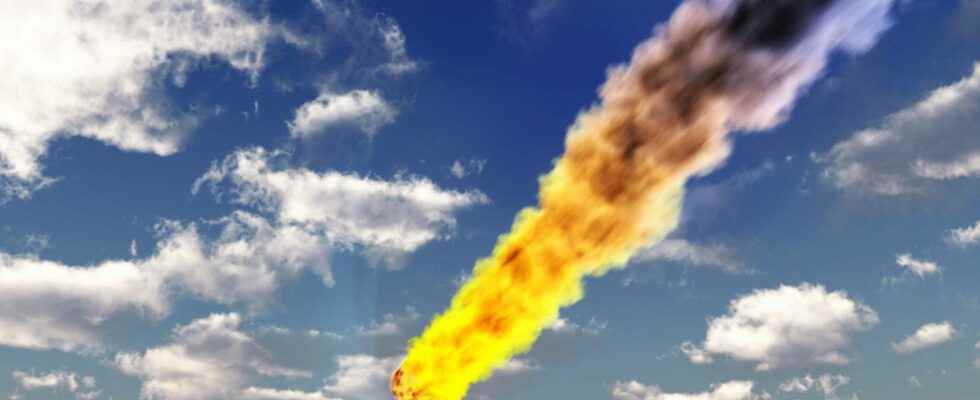So it’s confirmed, there is everything you need in the rocks floating in space to make life. What reinforce the hypothesis of a fertilization of the Earth, 4 billion years ago, by meteor showers. Decryption with Mathilde Fontez, editor-in-chief of the magazine Epsiloon.
franceinfo: A discovery this morning: geochemists have found all the basic ingredients of life in meteorites!
Mathilde Fontez: These are nucleobases, chemical molecules: and there are five of them. Five molecules that store information in our DNA, and in that of all living organisms. Adenine, guanine, uracil, cytosine and thymine: they combine to form the genetic code for all life on Earth. And, yes, they are all present in meteorites, these stones that come from space.
We had already found such chemical elements in meteorites?
It’s been suspected for a long time that there is, yes. Firstly, because asteroids, you know these balls of rock which orbit in space and which become meteorites when they fall on Earth, we know that they are made up of carbon and water: they therefore all have the elements to form organic molecules.
And we had already found nucleobases. Two from the 1960s, adenine and guanine, in a meteorite that fell in France, south of Montauban: the Orgueil meteorite. And then uracil.
There, a team led by the Japanese geochemist Yasuhiro Oba, has just discovered the last two: cytosine and thymine. It is therefore proven, there is everything you need in asteroids to make life!
Does that mean there could be life on these asteroids?
Probably not. It’s too cold on these asteroids, and they’re far too small to have an atmosphere. It’s still little balls of desolate rocks, floating in space. The water is in the form of ice. However, liquid water is the necessary condition for life for exobiologists, researchers who work on the concept of extraterrestrial life.
But what we imagine is that these asteroids could have brought these elements, these nucleobases, to Earth, just after its birth. There were then intense bombardments of asteroids which could fertilize the Earth in a way. Then these molecules would have assembled and life would have formed.
How did the researchers find these nucleobases? They analyzed a new meteorite?
No, they took samples of meteorites that had already been studied. But they used a new method of analysis, a gentler method that had never been tested. There remains a small doubt: the researchers cannot completely exclude terrestrial contamination.
To confirm these measurements, it would be best to directly study asteroid material that has not been modified by falling into the Earth’s atmosphere and onto the ground. That’s good: two space missions have just taken some: the Japanese Hayabusa 2 mission – the samples brought back to Earth are being studied. And the American Osiris Rex mission which will return to Earth in September 2023.
